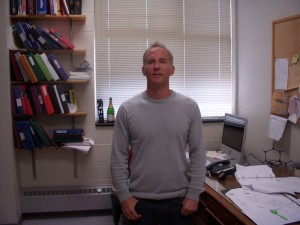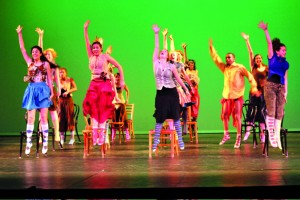The University ramped up its efforts to strengthen town-gown relations with its recent purchase of the Campus Theatre. Already this year the Barnes & Noble Bookstore at Bucknell University opened downtown, and the University acquired both the post office and the DeWitt building. With these additions in mind, we believe that the University is making positive strides toward a stronger partnership with Lewisburg, but that it should also be wary of its actions becoming too imperial.
Integrating the campus with Lewisburg of course has its benefits. Purchasing the downtown buildings allows the University to help renovate and preserve several historic structures. In addition, the University’s plans to move several offices into the purchased buildings will increase student traffic downtown. With more visitors in the area, local businesses could see higher sales and revenues. Further integration could also change the very nature of downtown Lewisburg in terms of selection of goods and services and operating hours, making it more marketable to current and prospective students as well as townspeople.
The strengthened partnership could also foster mutual respect and understanding between University students and Lewisburg citizens. Having more students and townspeople interact could help erase the invisible barrier that separates the campus and the town.
In the case of the Campus Theatre, the University is assuming financial control over the building, increasing its involvement with Campus Theatre Organization Ltd. from assistance to ownership. While the purchase will now qualify the organization for state economic development grants, we are also concerned that ownership will place the Campus Theatre at the mercy of the University’s will. The Campus Theatre organization is supposed to maintain control over programming and film scheduling, but the potential for financial constraints to morph into other programming restraints still exists.
Likewise, the University’s potential ability to exercise control over the town is troubling. If the University continues to procure much of the downtown area for its use, Lewisburg could become a college town in its own right rather than a town that contains the University. While a college-town atmosphere may bolster the University’s marketability, it also further threatens the quaint, small-town way of life in Lewisburg.
In addition, while some will benefit from increased business, others have been and will be forced out by corporate entities like the Barnes & Noble bookstore. While we are in favor of greater integration, we believe it can be accomplished without conquest. The University should not wield control without giving due consideration to the greater Lewisburg community as well as the future of the University and its students.
The degree of integration is also a point of contention. For many, the downtown area serves as an escape from the stress of campus. Extending the campus’ reach to town will expose students to life outside the “bubble,” but it will also mark a fundamental change in the campus culture. There is a limit to how integrated the town and the University should be, and we believe that the limit will soon be reached.



